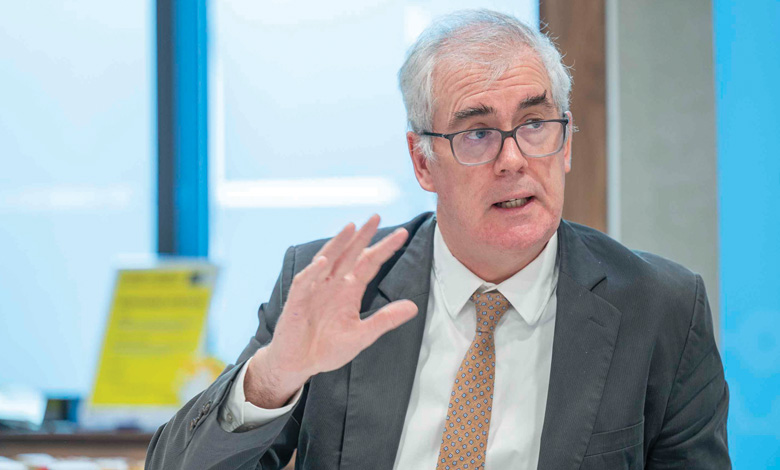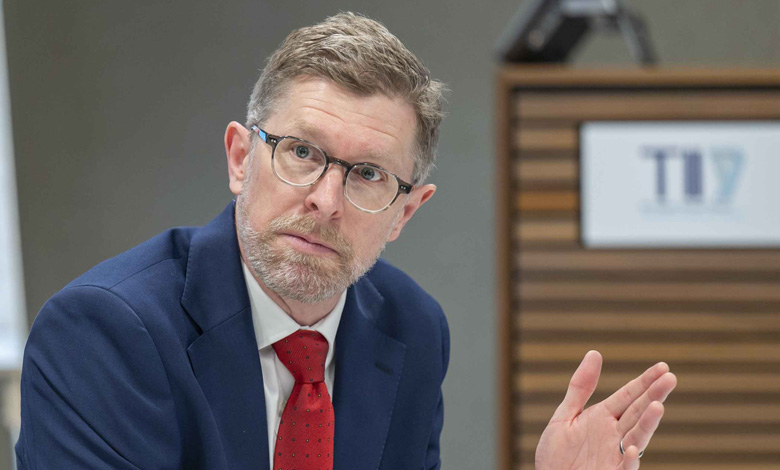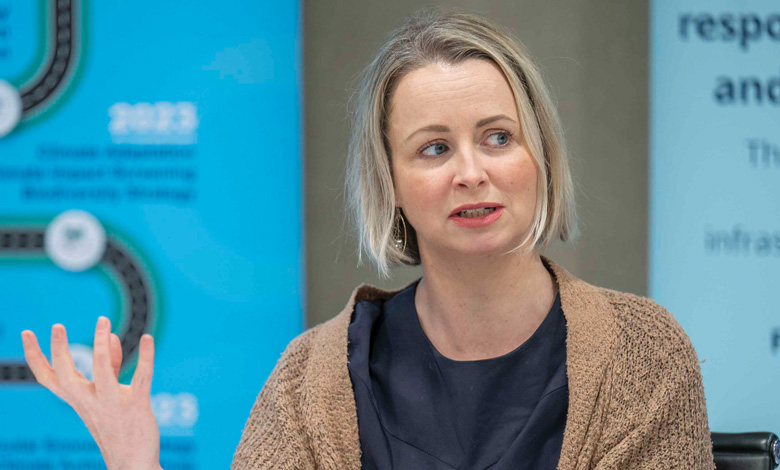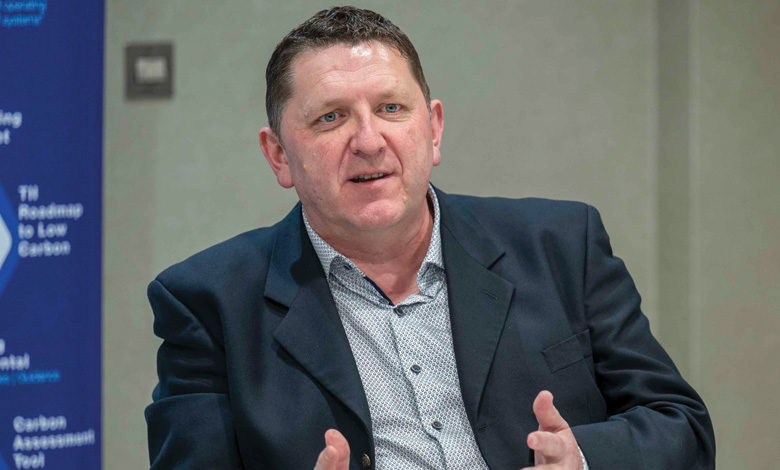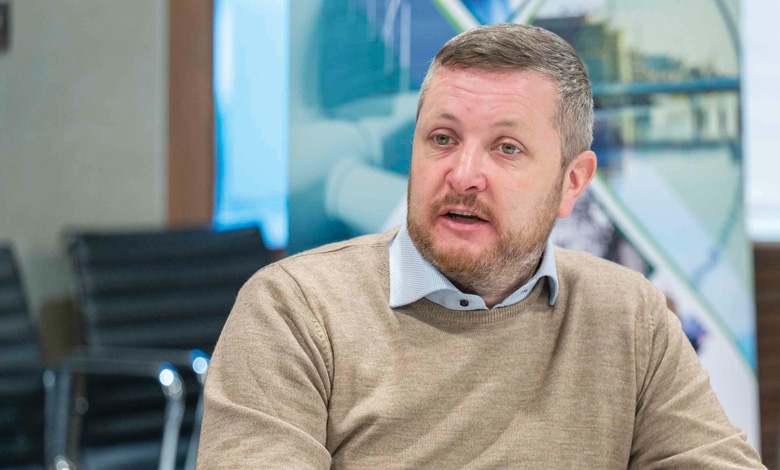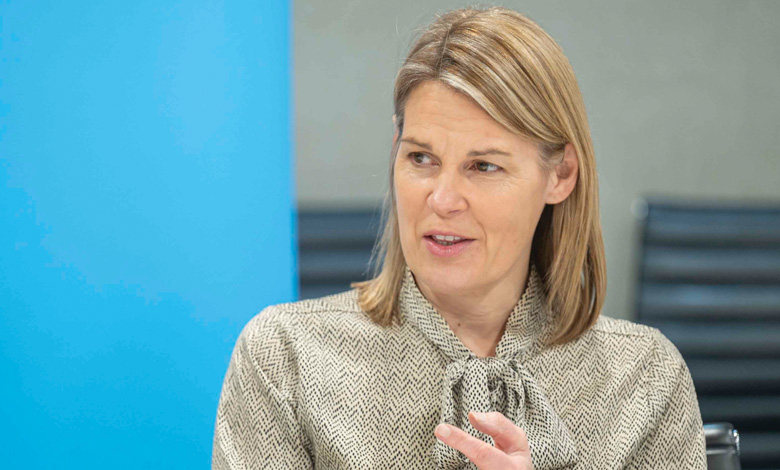Energising future transport: Navigating the key infrastructure challenges to meet Ireland’s alternative fuels targets
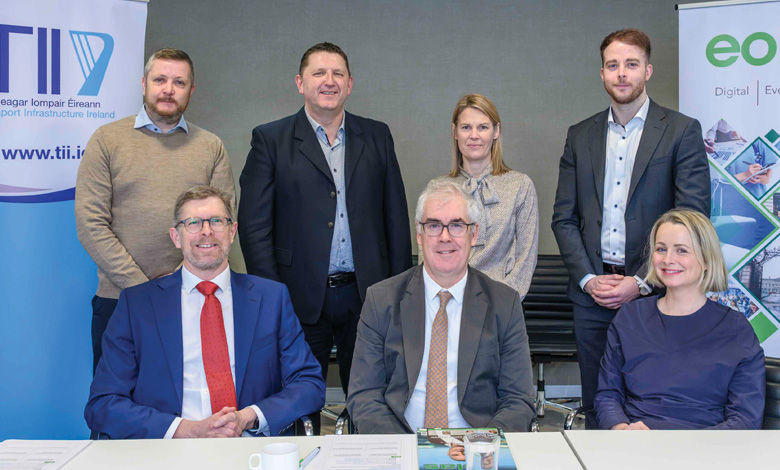
Transport Infrastructure Ireland (TII) hosted a round table discussion at its Parkgate Street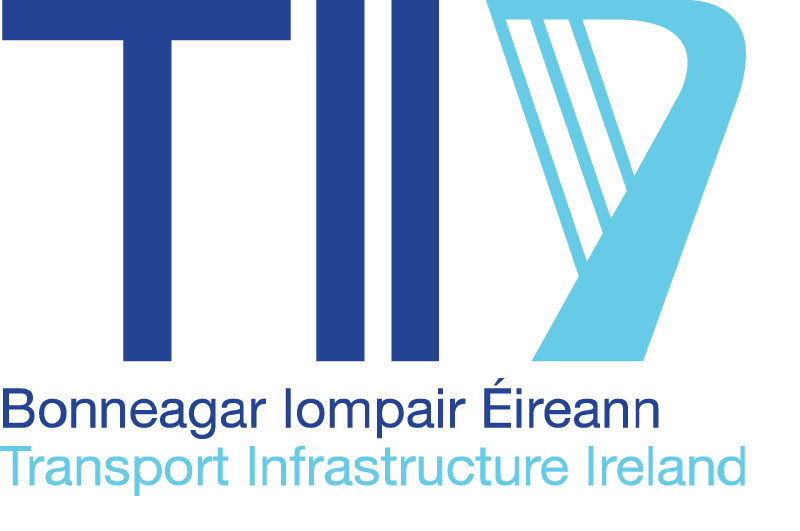 headquarters in Dublin, assembling stakeholders from across the energy and transport sectors, including industry representatives, to determine how Ireland can deliver against the alternative fuels targets mandated by the EU’s Alternative Fuels Infrastructure Regulation (AFIR).
headquarters in Dublin, assembling stakeholders from across the energy and transport sectors, including industry representatives, to determine how Ireland can deliver against the alternative fuels targets mandated by the EU’s Alternative Fuels Infrastructure Regulation (AFIR).
What is the single greatest obstacle to delivering the infrastructure necessary for Ireland to meet its mandatory Alternative Fuels Infrastructure Regulation (AFIR) obligations within the given timeframes?
Dónal Minnock

The key obstacle is demand. Although we have seen a 20 per cent increase in the number of electric light duty vehicles (LDVs) sales in January 2025 compared with January 2024, significant continued growth in the uptake of electric light duty vehicles is required to meet the 2030 Climate Action Plan targets. In alignment with the just transition and balanced regional development under the National Planning Framework, we must stimulate greater demand, including rural Ireland where the EV uptake is lower. Similarly, demand for electric heavy-duty vehicles (HDVs) is another serious challenge when we talk about AFIR. To date, there is estimated to be only around 40 electric HDVs in the State among a 40,000-strong HDV fleet. As such, we must ensure that the recharging infrastructure is available to encourage the transition we need to see.
Darren Kinsella
There is a shortage in green skills in the labour market, which is exacerbated by broad supply chain challenges. Education around the rationale for the transition to EVs can make it an attractive career path. If we can attract a sustainable pipeline of skills, we will meet our AFIR targets. There is also a challenge in coordinating the grid with EV chargers and the other infrastructure required to makes these solutions more feasible and we hope that progress in the planning sphere can help overcome these challenges.
John Martin
It is important to remember that AFIR is not synonymous with EV charging. Rather, it is also about hydrogen refuelling infrastructure as well as electricity supply to certain sea-going vessels at ports, and stationary aircraft in airports. Regarding hydrogen, in the absence of any significant green hydrogen economy in Ireland, we do not currently have supply, or active demand, in the transport sector. However, as per the Renewable Energy Directive and AFIR, the EU has established a minimum target for the delivery of hydrogen refuelling infrastructure by 2030. As such, it is anticipated that Ireland will be required to deliver between five and six hydrogen refuelling stations. While hydrogen will have a role in decarbonising elements of the transport sector, the obvious risk is the creation of stranded assets amid a lack of demand. That could be very damaging, not only from an investment perspective, but from a reputational perspective.
Aoife O’Grady
While EV uptake is not quite where we need it to be, it is not far off. There was a slump in demand in 2024, but this was still on a par with what we saw in 2022, and 2022 was our second most successful year ever for EV uptake. The figures for January 2025 indicate that demand is growing again. However, while have seen a total increase of 150 per cent in EVs on our roads in a four-year period, we have not trained or upskilled 150 per cent more EV charging infrastructure technicians, and this skills capacity will take time to develop.
Des Phelan
There is no silver bullet or one single solution which will help us meet our obligations, it is about achieving the right mix of solutions. In some instances, hydrogen refuelling will be a long-term solution, especially in the aviation sector where there will be a need for sustainable aviation fuel (SAF). In others, hydrogen will be transitional while electrification infrastructure is scaled up. For hydrogen, the main challenge is demand. Mandates can form part of the solution. Currently, Ireland has mandated public transport operators to decarbonise 50 per cent of vehicle fleets. Subsidising vehicle capital costs will be necessary to achieve cost of ownership (TCO) parity with equivalent internal combustion engine (ICE) vehicles would allow operators to purchase hydrogen vehicles and meet AFIR obligations without further support from government.
Bevin Cody
The electricity network is supporting the delivery of many different national policies not only in transport, but also across housing, renewables, buildings, and industry. New targets and requirements have materialised over a relatively short time which are putting pressure on network infrastructure and contributing to capacity constraints. It takes time to build and expand electrical networks and this is decoupled from the pace of change we are seeing. ESB Networks is scaling up to meet the new demand requirements, but network capacity will remain a challenge in the short to medium term.
How can the transport sector most effectively collaborate with the energy sector in the pursuit of AFIR targets given, for instance, existing capacity constraints in Ireland’s electricity grid?
“Going beyond the AFIR requirements is very worthwhile, especially in terms of market signals and instilling consumer confidence.”
Dónal Minnock
Bevin Cody
Strategy and policy, such as AFIR, are developed at national and European level but how it is interpreted and delivered on the ground warrants clarity from an infrastructure delivery standpoint. Often, this is not a challenge that ESB Networks or the relevant local authority can answer alone, so a collaborative approach is the best means of ensuring that we can meet the requirements. Many insights for innovation come from collaboration with customers and stakeholders as they bring an expert understanding of commercial viability. Having tools and structures to support good communications and data sharing is critical. The more information we can share, the better we can co-design solutions to overcome challenges and capitalise on opportunities.
Des Phelan
In the last three years, progress in decarbonising the transport sector has been enabled by joint planning, joint forecasting, and early engagement. Location, timeline, and technology must coincide for both battery and hydrogen vehicles to ensure the successful rollout of alternative fuel infrastructure. Hydrogen Mobility Ireland considers that hydrogen production has the capacity to alleviate grid constraints by directly connecting electrolysers to renewables that cannot obtain grid connections or are frequently required to dispatch-down.
Dónal Minnock
ZEVI’s Electric Vehicle Charging Infrastructure Strategy 2022-2025 acknowledged there was a need for increased collaboration with the energy sector, and this is exactly what has materialised. In tandem with the implementation of the EV recharging infrastructure programme identified in the strategy and more explicitly in the subsequent National Road EV Charging Network Plan, we now have fora through which we can engage with stakeholders on infrastructure, and this is the basis for continued growth. As AFIR matures, there will be an increased need for a collaborative focus on challenges such as the decarbonisation of HDVs.
Aoife O’Grady
While collaboration between the transport and energy sectors is already strong, but there is always room for improvement. For instance, there is room for growth with the other sectors, including education and skills. I spend around 30 per cent of my working week in collaborative settings with public and private sector stakeholders. The scale of the challenge before us demands this level of collaboration. Meeting our AFIR obligations is such a complex challenge and no one organisation – including the Department of Transport – can deliver these alone.
“It is important to remember that AFIR is not synonymous with EV charging.” John Martin
What role must be played, firstly by the State, and secondly, by the market, to maximise the delivery of alternative fuels infrastructure?
John Martin
The solution to decarbonising transport, in addition to addressing systemic travel behaviour, also lies in determining an appropriate mix of technologies. What the State must do is provide a policy framework which relies on collaborative communication with industry and with the wider transport sector, including vehicle manufacturers, fleet operators, charge point operators, and hydrogen refuelling station providers. We must determine what technologies are best aligned with different parts of the transport system. Currently, there is a sense that we are trying to throw everything at every sector, whereas we must take a segmented approach to use cases. While leading with electrification as the default technology, we must also acknowledge its limitations, including, for instance, increasing electricity grid capacity constraints. There are also certain use cases, both in terms of land transport, and in terms of aviation and maritime, where electrification is not the most appropriate solution, or where other technologies, such as hydrogen, are clearly more appropriate and should be the default. Policy design clarity, based on segmentation, will send a powerful signal to the market about which elements of the system we should actively target for hydrogen.
Des Phelan
The State could provide more detail on TCO mandates. HMI’s recommendation is to subsidise production and vehicle capital simultaneously to achieve cost parity. From a market perspective, we must participate on working groups with policymakers to examine this specific sector and outline the role for hydrogen in it. We need collaboration to successfully implement AFIR. We also must remember that there are some areas where electrification is not a viable long-term solution, including long-haul coaches which travel on an all-island basis and, in some instances, can run for 18 hours at a time. It is about getting the balance of solutions right.
“For the State, the mission of the day is communication and transparency.” Aoife O’Grady
Dónal Minnock
The State needs to focus on the hard to abate sectors, such as providing support for the establishment of the zero emission HDV market. Currently, we have strong stakeholder engagement across the HDV sector, which will feed into the specifics of how each solution will be delivered. Our current approach to delivery of the ZEVI strategy and plan is demonstrated in the light duty vehicle grant schemes we are currently running. This allows for quick and ready investment predominantly at existing sites. In terms of the future, the sharing of information and data collaboration is an important strand. In April 2025, TII will have established its Alternative Fuels Data Office which will facilitate national compliance with the data requirements of the AFIR regulation. As EV fleet penetration continues to increase, our data platform will host an enormous quantum of dynamic recharging data, that will be publicly available to end users and private enterprise to develop smart solutions and innovative services to support the transition of the national fleet to alternative fuels transport.
Darren Kinsella
Investors in the sector must be encouraged to scale up their current levels, either through competitive tender processes or alternative investment models. Meanwhile, given that the public views EV technology as being unreliable and has a perception that charging infrastructure is inadequate, education is important. For example, we must better communicate the fact that there are a significant number of charging points in many parts of the country.
Aoife O’Grady
For the State, the mission of the day is communication and transparency. We need to give stakeholders a clear outline of what is going to take place with a high-level strategy, and then we come up with our network plans to accommodate different regions. Meanwhile, in speaking with private sector stakeholders, they have a clear understanding of where charge points are most needed and where they are in the most demand. Collaboration at all levels of both the public and private sectors is key. It is about being upfront, instilling confidence that the sector is maturing, and then scaling to deliver the AFIR targets.
Bevin Cody
One example of where the State could take a leading role is in the development of a broad data strategy which accounts for the interdependence of public sector bodies and agencies in this space. The alignment of the different policies of various organisations – and how infrastructure delivery plans align – would help other sectors and enable us to crystalise our own planning and delivery models. Key for ESB Networks is knowing where new infrastructure and low carbon technologies are being deployed across the country so that we can plan the network and target resources to the right areas.
How can the planning, development, deployment, and operation of AFI be prioritised to avoid a deficit in rural Ireland?
“Progress in decarbonising the transport sector has been enabled by joint planning, joint forecasting, and early engagement.”
Des Phelan
Aoife O’Grady
It depends where in rural Ireland we are talking about. From a ZEVI perspective, there are two different problems. The first is deploying EV charging infrastructure in less commercially viable locations, which constitutes most of rural Ireland. We expect that less or non-commercially viable locations will have to be much more heavily subsidised than motorway charging which required some state subsidy but was competitive enough to leverage private sector investment.
The second problem relates to the tourist industry. The Wild Atlantic Way is heavily dependent on road transport – particularly coach tours – and while charging infrastructure usage will peak in the summer months, it will be much less frequent in the winter months. How do we service that? The required funding model is not impossible, but it is more complex than other scenarios. One option is considering a state guarantee on minimum use levels as per the road tolling precedent, or a large state subsidy.
Bevin Cody
Picking up on the challenge of seasonal use of power; that is a prime example of the opportunity for grid flexibility. Flexible connections could provide customers in rural areas with enhanced access to network capacity during summer months when overall demand for electricity is lower. Public charging infrastructure often requires high network capacity in areas where historic demand has been very low, so major investment in new infrastructure may be needed. Mandated flexibility or mandated controllability of charge points could provide a way of balancing the needs of customers and the network until new network infrastructure is built.
Des Phelan
From a hydrogen perspective, refuelling stations will be deployed in urban nodes first. I agree with John in terms of getting the balance of technologies right. To progress, we must deliver the first hydrogen refuelling stations in large cities, ensure they are fully utilised, and build from there. Meanwhile, deploying hydrogen production across rural Ireland, in proximity to renewables, will bring high-quality jobs to rural areas.
Dónal Minnock
ZEVI’s National Road EV Charging Network Plan, published in 2024, targeted going beyond the AFIR requirements for LDVs to align with Climate Action Plan ambition. It is not an Dublin centric, eastern-seaboard-dominated, or urban-focused delivery plan; all national roads in this country are targeted to get EV recharging infrastructure stations at the appropriate inter distances included in the National Road EV Charging Network Plan. Many National Primary Roads serve rural communities, connecting towns and villages across the State. There is an opportunity for service providers and private enterprise to develop solutions which provide accessibility to rural or marginalised communities.
“We must better communicate the fact that there are a significant number of charging points in many parts of the country.
Darren Kinsella
Darren Kinsella
An estimated 20 per cent of homeowners are unable to charge their EVs at home, while 80 per cent of privately owned EVs are not charged at home. NSAI (National Standards Authority of Ireland) regulations determine that EV charging infrastructure may not be suitable for deployment within the home, depending on factors relating to proper grounding, circuit protection, and outdoor safety enclosures. We will need greater education, alongside periodic inspections of EV charger installations.
Bevin Cody
To support electrification, ESB Networks has developed a register of low carbon technology (LCT) devices that meet the necessary standard to connect to the network. That removes an element of administration for customers. However, we also need to find out where these devices are located so that we can plan network reinforcements and investments to maintain power quality and reliability for LCT customers. The data exists but the challenge is accessing and unlocking it to extract value for customers and communities.
John Martin
There is not always full alignment between national domestic needs versus AFIR’s mandatory national targets, and it is important to make the point that AFIR is very much a one size fits all regulation in terms of the whole of the EU which is, clearly, quite heavily biased towards the European mainland where there is a regular through flow of traffic. That drives the thinking behind AFIR. However, in Ireland, as an island nation, the requirements are quite different.
What are the merits of seeking to go beyond the mandatory minimum levels of AFI deployment established by AFIR to accelerate uptake of alternative fuels?
John Martin
In terms of electrification, there are several dimensions in which Ireland will have to go above and beyond what is required in AFIR. Equally, in terms of hydrogen, there will be several areas in which even meeting the bare minimum AFIR mandated requirement is likely to result in an oversupply. We must recognise the flexibilities. In terms of AFIR, there are some elements that are simply not yet appropriate in an Irish context, and we must push back to avoid providing infrastructure just for the sake of providing infrastructure. We will need to really engage with the AFIR review which must take place by 31 December 2026.
Aoife O’Grady
Different elements of AFIR poses different challenges for us. AFIR’s LDV targets are appropriate. That does not mean they are easy to deliver, but if we meet them, we have no risk of stranded assets. AFIR’s HDV targets are more daunting in that they are much higher and are likely to deliver stranded assets if we fully deliver them. There is an AFIR review scheduled by 2027 and if we have delivered against the targets and the stranded assets scenario transpires, we will have evidence to argue for a derogation for the next targets given the absence of demand, the cost to the State, and the use of core electricity network infrastructure that is needed elsewhere.
Des Phelan
Going beyond the minimum level of deployment would require a significantly larger proportion of Irish mobility to be decarbonised. I have engaged with the Swedish Forest Agency – Skogsstyrelsen – in terms of the electrification of its HDV fleet. While the Swedish grid is catching up, it is considering the use of hydrogen fuelled generators to support it. The common theme is striking a balance as we consolidate our grid infrastructure. Here is a place for alternative fuels such as hydrogen.
“Public charging infrastructure often requires high network capacity in areas where historic demand has been very low, so major investment in new infrastructure may be needed.”
Bevin Cody
Bevin Cody
It is critical that we are using the renewable energy that is on the system and matching it to demand. Having a more flexible electricity network is key to this. There is a strong cohort across all age demographics which is committed to climate action. By actively participating in initiatives like ESB Networks’ Beat the Peak, people can ensure that they are using clean, green energy to meet their energy needs and helping to drive down carbon emissions.
Dónal Minnock
Going beyond the AFIR requirements is very worthwhile, especially in terms of market signals and instilling consumer confidence. Ultimately, the goal is operational sufficiency, whereby the market will deliver the required levels of EV recharging infrastructure and at locations where it is needed. For now, we are stimulating growth in demand. By going beyond the minimum requirements, we must adopt an approach that recognises the long-term goals while avoiding the creation of stranded assets in the short term. From 2035, in practice, it will no longer be possible to place cars or vans with an internal combustion engine on the market in the EU. Beyond that point, we can anticipate a surge in recharging infrastructure demand as the remaining fleet transition to alternative fuel vehicles.

